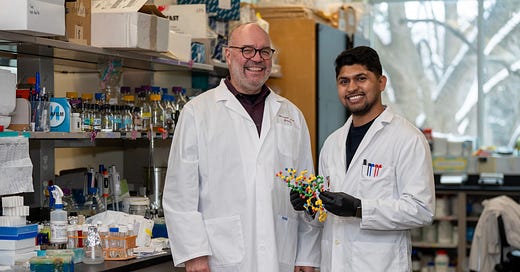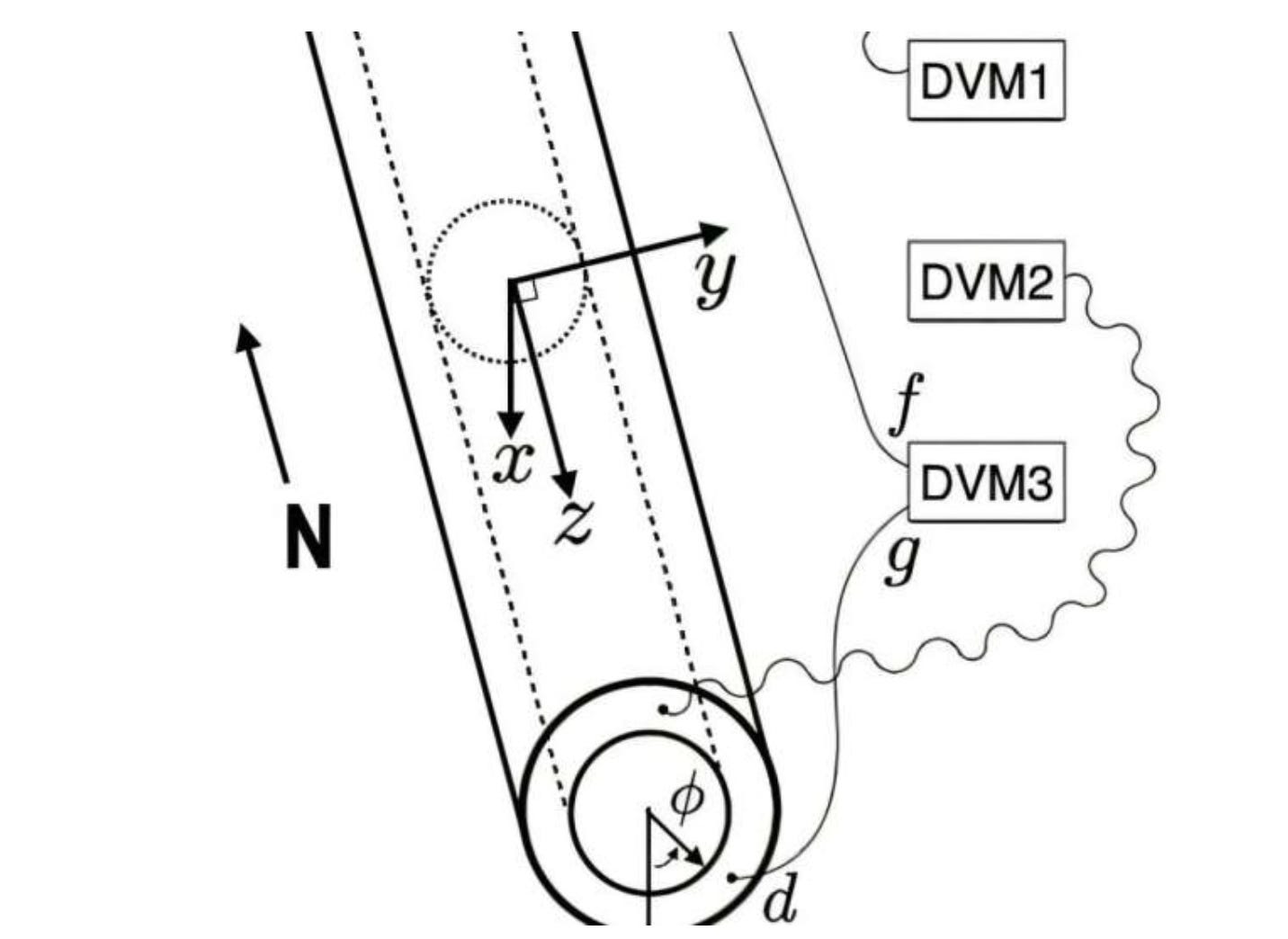A New Class of Antibiotics, Lightning and Generation of Electricity from the Earth's Rotation
April 10
This week we will investigate a new class of antibiotics that have the potential for overcoming antibiotic resistance. We examine a possible way of generating electricity from the rotation of the earth. This may be as close as we get to a perpetual electricity generator. Finally we will learn a few things about different types and causes of lightning.
A New Class of Antibiotics
It has been over 30 years since a new class of antibiotics reached the market. A team at McMaster University in Canada may soon break that drought. These new drugs will challenge the most drug resistant bacteria on the planet.
The team found that a new molecule called Lariocidin, a lasso peptide, which attacks bacteria in a different way to other antibiotics. Lariocidin binds directly to a bacterium’s protein synthesis machinery in a new way. This inhibits its ability to grow and survive.
Lariocidin is produced by a bacteria called Paenibacillus which is a common bacteria found in soil. In fact one of the team dug up the test samples from their backyard. The team allowed the bacteria to grow for a year which allowed them to detect very slow growing species. One of those slow growing species was Paenibacillus which was producing a substance that had strong activity against other bacteria.
The new molecule is not toxic to human cells, it is not susceptible to existing mechanisms of antibiotic resistance and it works well in animal models of infection. The team is now working on modifying the molecule to allow it to be produced in quantities large enough for clinical development in humans.
Generating Electricity via the Earth’s Rotation
A team from Princeton, CIT Jet Propulsion Laboratory and Spectral Sensor Solutions, all in the US have developed a model of how we could generate electricity using the energy from the rotation of the earth. Their proposed device interacts with the Earth’s magnetic field.
The team first published a paper on this subject in 2016. Their paper was rejected by the scientific community as they argued that any voltage produced would be cancelled as the electrons rearranged themselves during the generation of an electric field. The team set out to try and prevent this cancellation.
Their prototype device is built from a cylinder made of manganese-zinc ferrite, a weak conductor. This cylinder served as a magnetic shield. The cylinder was oriented in a North-South direction at a 57 degree angle. That made the cylinder perpendicular to both the Earth’s rotational motion and magnetic field.
Electrodes were placed at each end of the cylinder to measure voltage and lights were turned off to prevent photoelectric fields. 18 microvolts were generated across the cylinder that could not be attributed to any other source. Their conclusion was that the energy came from the Earth’s rotation.
The team tested the device at other angles and no such voltage was generated. The process needs to be confirmed by other teams using the same type of equipment under different scenarios to ensure that there were no other sources of electrical generation however if the team is correct the process should be able to be scaled up to produce useful amounts of electricity in a perpetual way.
Lightning
Why did the Lightning Stop
If you have a look at a map of lighting near the Port of Singapore there is an intense streak of lighting activity right over the busiest shipping lane in the world. Was the lightning responding to the ships or the tiny smog particles that they emit. A team at the University of Washington have been studying how these exhaust plumes cause an increase in the frequency of lightning.
Prior to 2020 global shipping lines were allowed to use high sulfur fuels to carry trade around the world. The problem with this type of fuel was the sulfur in the air forms into sulfuric acid which then falls to earth. This was the acid rain that many polluted cities experienced in the 1970’s before sulfur was removed from car fuel. New shipping regulations that came into force in 2020 reduced the amount of sulfur in fuel by 77%. The amount of lightning over shipping lanes dropped by 50% overnight.
This demonstrates how thunderstorms, which can be up to 16 kilometers tall, are sensitive to the emission of tiny particles into the air. Aerosol particles can come from biological sources and man made sources. In a single liter of air there are tens of thousands of suspended clusters of liquid or solid. Polluted cites can contain millions of particles per liter.
These particles help cloud formation. The more particles, the more cloud. The shipping lanes near the Port of Singapore are the busiest in the world. The particles in storm clouds help form ice crystals. When any charged ice crystals rise higher, denser ice particles fall. This makes the cloud a giant capacitor. Eventually that capacitor discharges and out shoots a lightning bolt, five times hotter than the surface of the sun. Having lived in Singapore, I can assert that the storms can be intense.
Red Lightning
There is an atmospheric phenomena known as electrical discharges that occur high above thunderstorms. They are known as '“red sprites”. They were named due to their resemblance to a jellyfish and their vivid red flashes. On 19 May 2022 two Chinese astrophotographers captured a storm with over one hundred red sprites over the Himalayas.
This photo won the Skyscapes category of the 2023 Astronomy Photographer of the Year awards. The team captured photos of dancing sprites, rare secondary jets and the first ever recorded case in Asia of green airglow.
A study conducted by the University of Science and Technology China has analyzed the parent lightning discharges. The sprites were triggered by high peak current positive cloud to cloud lightning strikes within a massive mesoscale convective system.
This event showed that thunderstorms in the Himalayas had the same potential to generate complex discharge structures comparable to those in the US Great Plains and offshore European storms.
Paying it Forward
If you have a start-up or know of a start-up that has a product ready for market please let me know. I would be happy to have a look and feature the startup in this newsletter. Also if any startups need introductions please get in touch and I will help where I can.
If you have any questions or comments please comment below.
I would also appreciate it if you could forward this newsletter to anyone that you think might be interested or provide a recommendation on Substack.






